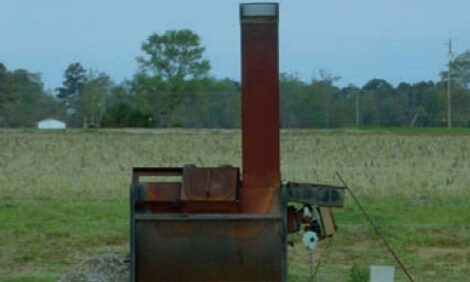



US Poultry Industry Manual - turkey hatching
Turkey hatching and poult servicingPart of Series:
< Previous Article in Series Next Article in Series >
Editor's Note: The following content is an excerpt from Poultry Industry Manual: The Foreign Animal Disease Preparedness and Response Plan (FAD PReP)/National Animal Health Emergency Management System (NAHEMS) Guidelines which is designed to provide a framework for dealing with an animal health emergency in the United States. Additional content from the manual will be provided as an article series.
When fertile eggs from the breeder farm arrive at the hatchery, they are placed into an egg holding room where they are maintained at the same temperature and humidity as the egg room on the farm. Eggs are held for 2-14 days after having been laid depending on several factors including breeder production, egg availability, supply and demand, and transportation issues. Optimal hatchability occurs when eggs are stored for approximately 7 days. Setting freshly laid eggs less than 2 days or older eggs over 14 days of age results in significantly reduced hatchability.
Hatching typically occurs 4 times a week on Monday, Tuesday, Thursday, and Friday. Wednesday is used for thorough cleaning of the hatchery. Some companies may use non-hatch days for hatching hen parent stock. Racks containing the eggs are often placed into an area for up to 12 hrs. to warm up prior to being placed into the incubator.
Incubators may be filled with a single setting of eggs (single-stage incubator) or have sets of eggs added sequentially (multi-stage incubator). Both types have advantages and disadvantages. Incubator temperature and humidity are precisely controlled based on the type of incubator and characteristics of the eggs, especially how long they have been stored, age of breeders when eggs were laid, and timing and duration of the hatch window. The more uniform the eggs, the easier it is to set incubator conditions for optimal hatching.
At approximately 25 days of incubation, eggs are transferred to the hatcher. In ovo injection of turkey eggs is not as common as it is for broiler eggs, but can be done at this time. Poults hatch between 27 and 28 days. A narrow hatch window is desirable to minimize variability among poults. Hatchability is usually 82-86% with few culls or small poults. In the hatcher, poults are allowed to dry and have their navels seal over before they are pulled, separated from unhatched eggs and shells, and prepared for movement to the farm. A sample of unhatched eggs from each group of eggs in the incubator may be examined to determine why they did not hatch, especially if there are hatchability problems with particular flocks or incubators. Categories of unhatched eggs include infertile, and early, middle, or late embryo death. Correct position of the embryo in the egg is determined (head needs to be up and under the right wing), whether internal pipping occurred, how much residual albumin and urates are present, vascular development of the chorioallantoic membrane, and if the embryo is malformed. Cull poults, unhatched poults, egg residue, and shells are usually macerated on site. Maceration equipment must be well maintained to make sure euthanasia of cull and unhatched poults is instantaneous.
Hatchery design and sanitation, particularly cleaning and disinfection, are extremely important in the production of healthy poults. Contact of open navels with bacteria in the environment can lead to infection and death. Fungal spores inhaled by poults from mold growth in the ventilation system results in losses due to brooder pneumonia. Programs based on culturing environmental swabs and air plates are used in most hatcheries to monitor sanitation. A one-way path through the hatchery with egg arrival on one side, poult shipment on the other side, and incubators, hatchers, and processing area in between is the best design. Some turkey hatcheries require showering of all personnel and wearing clean clothing provided by the company before entering the egg/poult areas. Adequate facilities to clean and disinfect all equipment are needed.
Poult Servicing
Newly hatched poults undergo several procedures in the hatchery to prevent diseases and trauma, and prepare them for the farm. Collectively, these procedures are called servicing and include sex determination, trimming of the beak and toes, and administration of injections of vitamins, fluids, or antibiotics. Historically, the snood of male poults also was amputated during servicing to protect turkeys from erysipelas, which often began in the snood traumatized by males fighting to determine dominance, but that practice is rarely done today. Aerosol application of vaccines, such as Newcastle disease, may also be done if the disease occurs in the area where the turkeys will be grown.
Males and females are separated using vent sexing by specialists trained in this procedure. Sufficient pressure is applied to the abdomen to evert the vent, permitting visualization of the primordial phallus in the male, or its absence in the female. Accuracy by well-trained individuals can exceed 98%. The usual sex ratio of poults is 52% males and 48% females.
Trimming of the beak and toes is done to reduce trauma among birds in the flock from pecking, feather pulling, and scratches, which can lead to infection and death or necessitate culling. The procedures are done with either a hot blade that immediately trims and cauterizes the tissue or specially designed equipment that utilizes laser light or microwaves, which causes necrosis and sloughing of beak and toe tissue within a few weeks leaving a healed surface. After using these methods of beak and toe trimming for several years, no significant adverse effects have been identified and they have become the standard in the turkey industry (National Turkey Federation, 2009). Poults are counted and placed into boxes divided into 4 quarters, each with 20-25 poults.
Following servicing, boxes containing the poults are stacked and organized into flocks in a warm, dimly-lit, holding room to rest overnight. Early the following morning the poults are delivered to the farm in specially designed vehicles (“poult buses”) that provide controlled temperature and ventilation for the poults. Placing all poults on a farm from a single breeder flock is ideal; however, most flocks consist of poults from multiple breeder flocks. The more breeder flock sources a commercial flock has, the more likely the flock is to have health problems. Every attempt should be made to match poults as closely as possible. For example, if a flock is put together with poults from young breeders (which produce small poults that are difficult to start) and poults from recycled breeders (which are larger and easier to start), mortality among poults from young breeders will be higher and their growth rate will be less than if they were brooded by themselves.

Reference: "USDA APHIS | FAD Prep Industry Manuals". Aphis.Usda.Gov. 2013. https://www.aphis.usda.gov/aph...
The manual was produced by the Center for Food Security and Public Health, Iowa State University of Science and Technology, College of Veterinary Medicine, in collaboration with the USDA Animal and Plant Health Inspection Service through a cooperative agreement.















